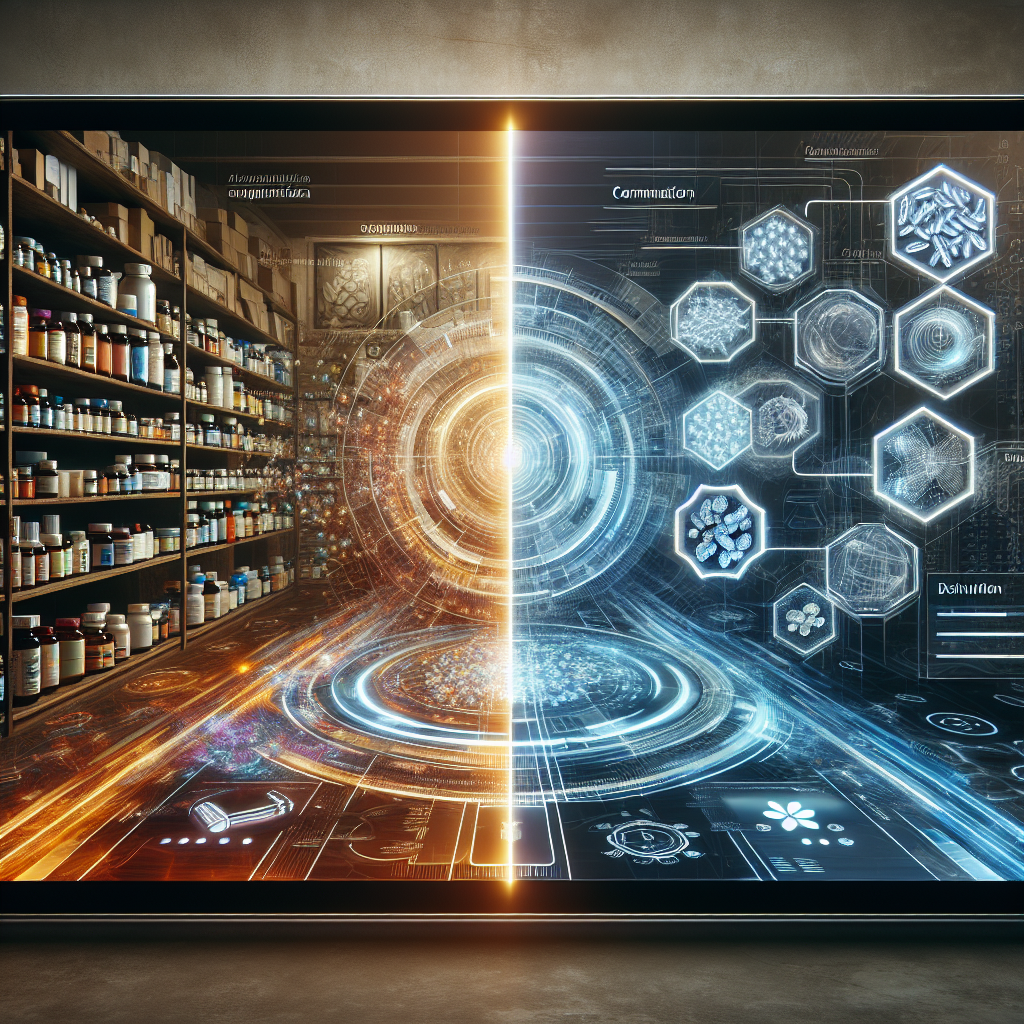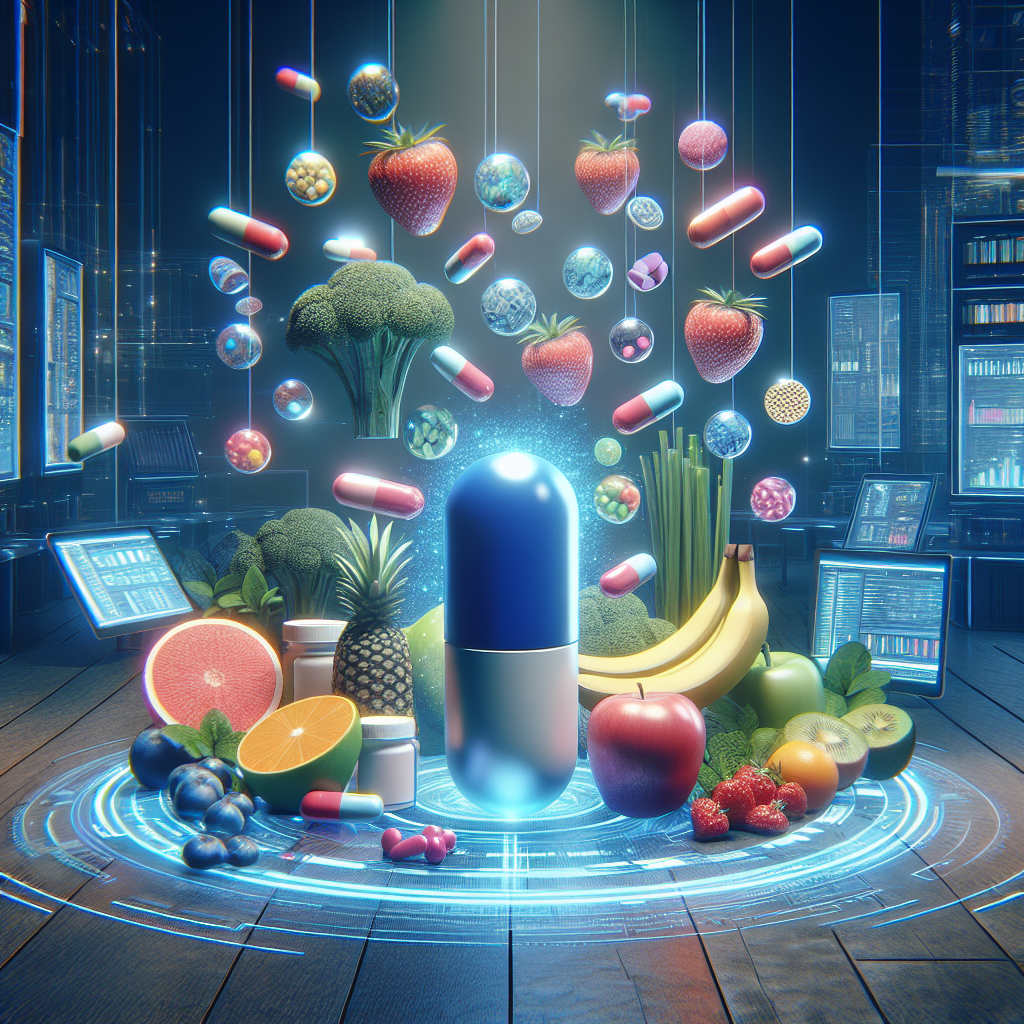The Intersection of Technology and Wellness: Vitamins

Discover the powerful intersection of technology and wellness with our range of vitamins. Enhance your health and wellbeing today. Click here to start your journey towards vibrant vitality.
Exploring the Role of Technology in Enhancing Vitamin Intake
The intersection of technology and wellness is a fascinating and rapidly evolving field, with new developments constantly emerging to enhance our health and wellbeing. One area where this intersection is particularly evident is in the realm of vitamins. Technology is playing an increasingly significant role in enhancing vitamin intake, offering innovative solutions to help us maintain optimal health.
Traditionally, vitamins have been consumed in the form of pills, capsules, or liquids. However, these methods often come with challenges such as difficulty swallowing, forgetfulness, or simply the inconvenience of having to carry around a bottle of pills. Technology has stepped in to address these issues, offering new and improved ways to ensure we get the vitamins we need.
One of the most significant technological advancements in this area is the development of vitamin patches. These patches, which are applied directly to the skin, deliver a steady stream of vitamins throughout the day. This method bypasses the digestive system, allowing for a higher absorption rate and ensuring that the body receives the full benefit of the vitamins. The convenience of these patches, which can be worn discreetly under clothing, also makes it easier for individuals to remember to take their vitamins.
In addition to patches, technology has also given rise to vitamin-infused wearable devices. These innovative products, which range from wristbands to necklaces, slowly release vitamins into the body throughout the day. Not only do these devices offer a convenient and effective way to boost vitamin intake, but they also serve as a constant reminder of the importance of maintaining good health.
Moreover, technology has also revolutionized the way we monitor our vitamin levels. There are now apps and devices that can track our vitamin intake, alerting us when we are deficient in certain vitamins and suggesting foods or supplements to help us reach our daily requirements. These tools can be particularly beneficial for individuals with specific dietary needs or restrictions, such as vegans or those with food allergies.
Furthermore, technology has also made it easier for us to access high-quality vitamins. Online platforms now offer personalized vitamin subscriptions, delivering a tailored selection of vitamins directly to our doorsteps each month. These services often include a comprehensive health assessment, ensuring that the vitamins we receive are specifically suited to our individual health needs.
However, while technology offers many benefits in terms of enhancing vitamin intake, it is important to remember that it should not replace a balanced diet. Vitamins are most effective when consumed as part of a varied and nutritious diet, and technology should be used as a tool to supplement, rather than replace, this.
In conclusion, the intersection of technology and wellness in the realm of vitamins is an exciting and rapidly evolving field. From vitamin patches and wearable devices to tracking apps and personalized subscriptions, technology is offering innovative solutions to help us maintain optimal health. As we continue to navigate this intersection, it is crucial that we use these tools responsibly, always prioritizing a balanced diet and consulting with healthcare professionals to ensure we are making the best choices for our health.
The Impact of Digital Advancements on Vitamin and Nutrient Tracking

The intersection of technology and wellness is a rapidly evolving landscape, with digital advancements playing a pivotal role in the way we understand and manage our health. One area where this intersection is particularly evident is in the realm of vitamins and nutrient tracking. The advent of digital tools and platforms has revolutionized our ability to monitor our vitamin intake, offering a more personalized and efficient approach to maintaining optimal health.
Traditionally, managing vitamin intake has been a complex task, often requiring individuals to maintain a balanced diet, take supplements, and regularly consult with healthcare professionals. However, the rise of digital technology has simplified this process, enabling individuals to track their vitamin and nutrient intake with unprecedented ease and accuracy.
One of the most significant digital advancements in this area is the development of mobile applications designed specifically for nutrient tracking. These apps allow users to log their daily food intake and provide detailed breakdowns of the vitamins and nutrients consumed. This real-time tracking enables individuals to identify any deficiencies in their diet and make necessary adjustments. Moreover, these apps often come with additional features such as personalized meal plans and reminders to take supplements, further supporting individuals in their wellness journey.
Another noteworthy digital advancement is the emergence of wearable technology. Devices such as smartwatches and fitness trackers are now equipped with sensors that can monitor various health metrics, including heart rate, sleep patterns, and even stress levels. Some of these devices can also estimate the user’s vitamin and nutrient needs based on their physical activity and other health data. This integration of technology into our daily lives offers a more holistic view of our health and wellness, allowing us to make more informed decisions about our vitamin intake.
The rise of telemedicine has also had a profound impact on the way we manage our vitamin intake. Virtual consultations with healthcare professionals have made it easier for individuals to discuss their dietary needs and concerns, obtain personalized advice, and even receive prescriptions for vitamin supplements. This digital approach to healthcare not only saves time and resources but also ensures that individuals have access to professional guidance regardless of their location.
Furthermore, the use of artificial intelligence (AI) in the field of nutrition is another exciting development. AI-powered platforms can analyze a user’s dietary habits, lifestyle, and health goals to provide personalized nutrition advice. These platforms can also predict potential vitamin deficiencies based on the user’s data and suggest appropriate dietary changes or supplements.
While these digital advancements have undoubtedly made it easier to track and manage our vitamin intake, it’s important to remember that technology is merely a tool. It should not replace professional medical advice or a balanced diet. Instead, it should be used as a supplement to these traditional methods, providing additional support and insights to help individuals achieve their wellness goals.
In conclusion, the intersection of technology and wellness has brought about significant changes in the way we understand and manage our vitamin intake. From mobile apps and wearable devices to telemedicine and AI, digital advancements have provided us with a wealth of tools to monitor our nutrient intake and maintain optimal health. As technology continues to evolve, we can expect to see even more innovative solutions designed to support our wellness journey.
How Technology is Revolutionizing the Vitamin and Wellness Industry
The intersection of technology and wellness is a fascinating and rapidly evolving space, particularly in the realm of vitamins and dietary supplements. The vitamin and wellness industry, once dominated by traditional brick-and-mortar stores and generic multivitamins, is now being revolutionized by technology. This transformation is not only changing the way vitamins are produced and distributed, but also how they are personalized and consumed, leading to a more efficient and effective approach to health and wellness.
In the past, consumers had to rely on broad-spectrum multivitamins that were designed to cater to the average person. However, with the advent of technology, companies are now able to offer personalized vitamins and supplements tailored to an individual’s unique needs. This is made possible through the use of advanced algorithms and data analysis. By gathering information about a person’s lifestyle, diet, health goals, and even genetic makeup, these algorithms can determine the exact nutrients that an individual needs. This level of personalization ensures that people are only consuming what their body truly requires, eliminating unnecessary intake and potential side effects.
Moreover, technology has also revolutionized the way vitamins are manufactured. The use of nanotechnology, for instance, has allowed for the creation of nano-sized vitamins that are more easily absorbed by the body. This not only increases the effectiveness of the vitamins but also reduces the amount needed for the desired effect. Additionally, 3D printing technology is being explored for its potential in creating customized vitamin supplements. This could allow for the production of vitamins in unique shapes and sizes, potentially making them easier to swallow or more appealing to children.
The distribution of vitamins has also been significantly impacted by technology. The rise of e-commerce platforms has made it easier than ever for consumers to access a wide range of vitamins and supplements from the comfort of their own homes. Furthermore, subscription services have emerged, offering regular deliveries of personalized vitamin packs. This not only provides convenience but also ensures consistency, which is crucial for the effectiveness of any supplement regimen.
Technology has also played a significant role in educating consumers about vitamins and their health benefits. Through online platforms and mobile apps, individuals can access a wealth of information about different nutrients, their effects on the body, and the best sources to obtain them. This has empowered consumers to make more informed decisions about their health and wellness.
Lastly, technology has facilitated the tracking and monitoring of vitamin intake and its impact on health. Wearable devices and mobile apps can now track a person’s nutrient levels, providing real-time feedback on their health status. This allows individuals to adjust their vitamin intake as needed, ensuring optimal health.
In conclusion, the intersection of technology and wellness in the vitamin industry is leading to a more personalized, efficient, and effective approach to health. Through advancements in data analysis, manufacturing, distribution, education, and monitoring, technology is revolutionizing the way we view and consume vitamins. As technology continues to evolve, we can expect even more exciting innovations in the vitamin and wellness industry, paving the way for a healthier future.